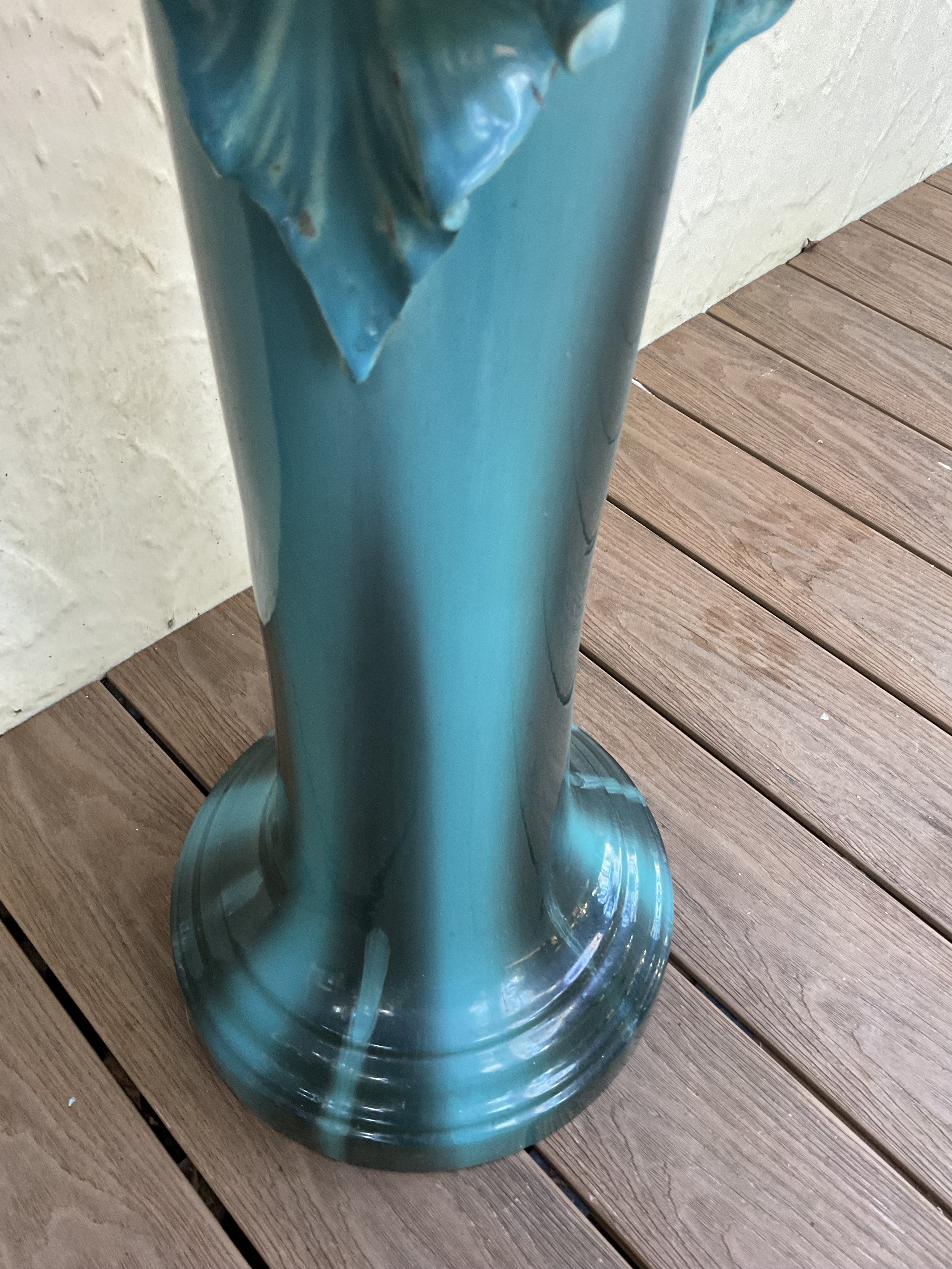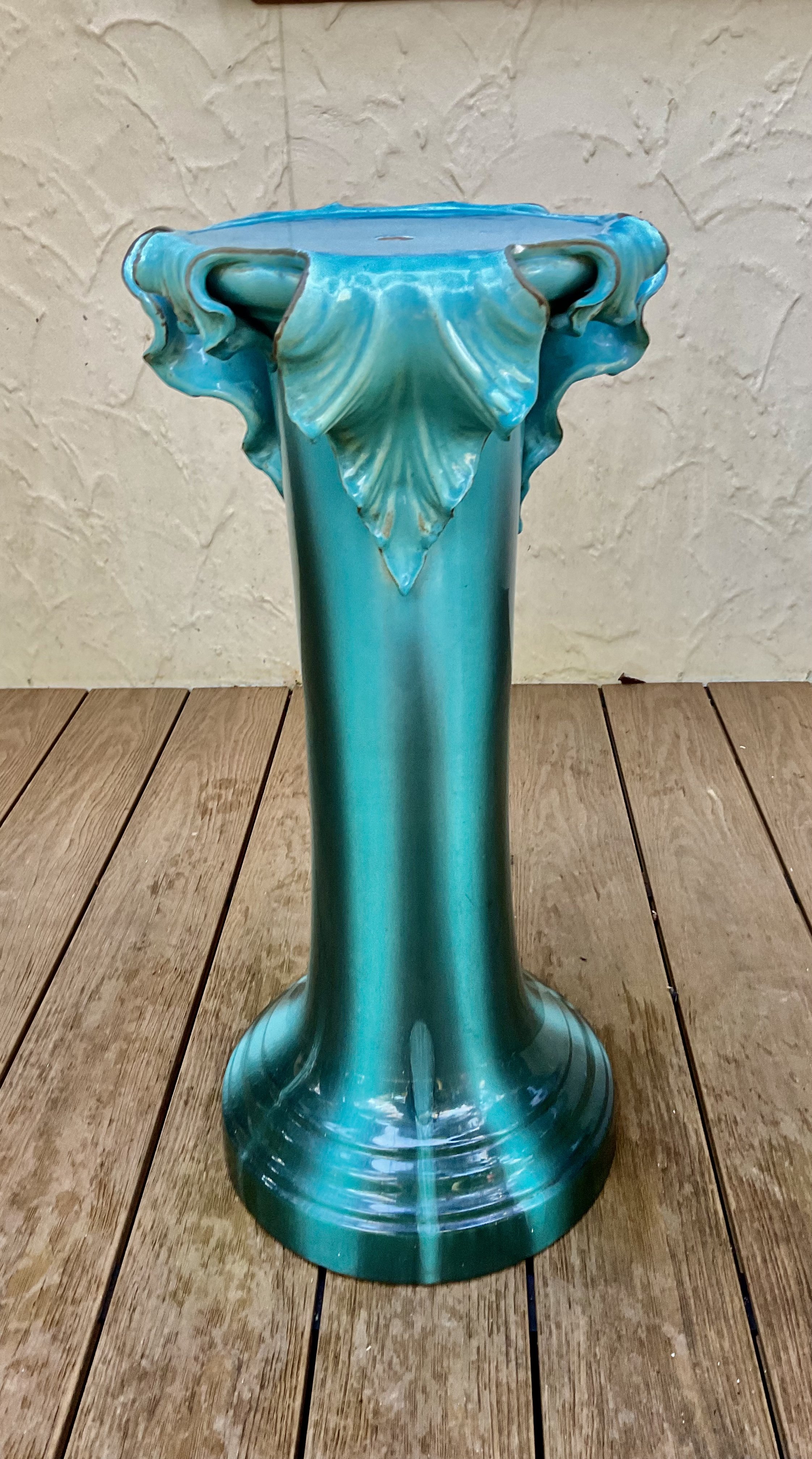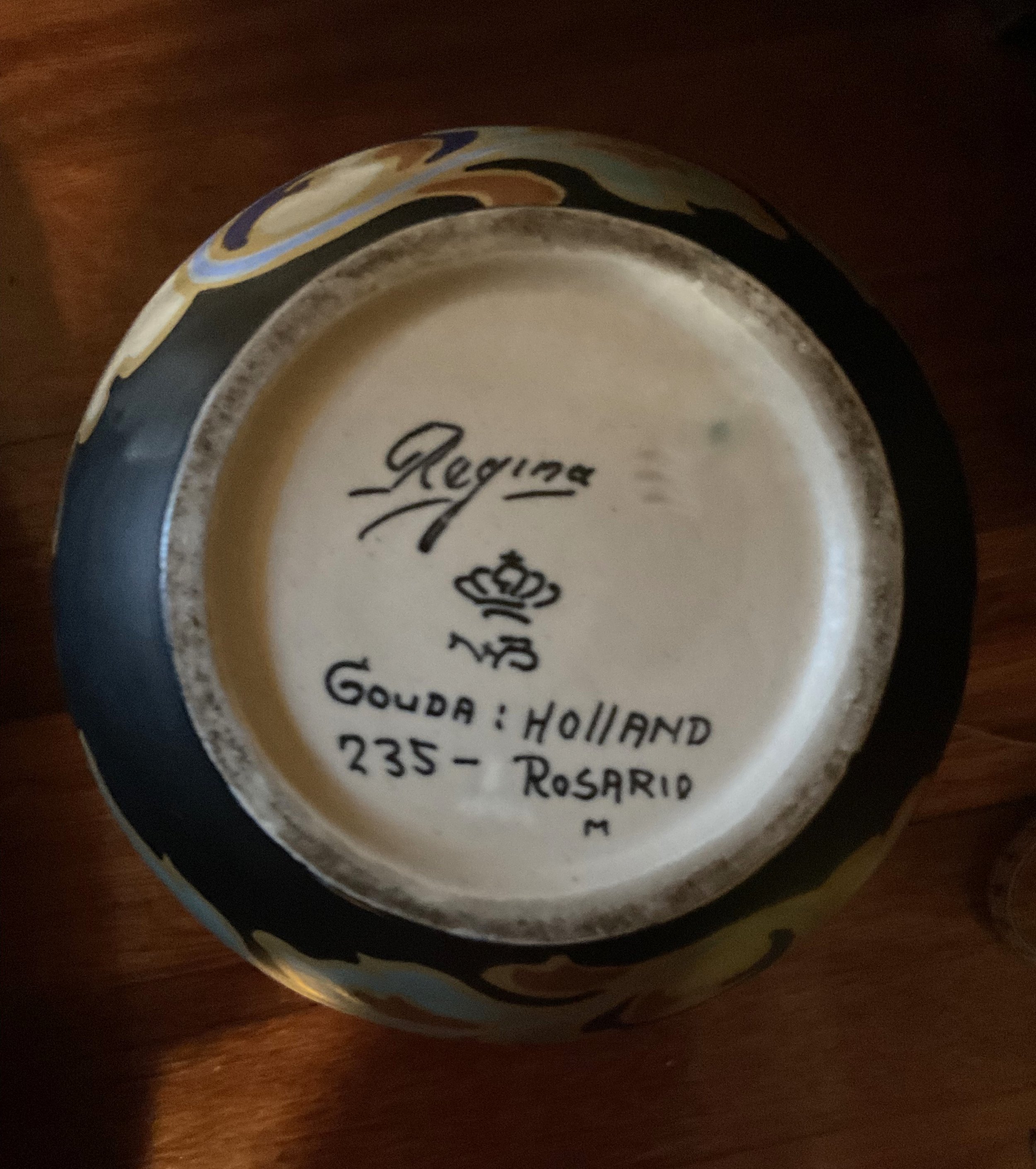 Image 1 of 6
Image 1 of 6

 Image 2 of 6
Image 2 of 6

 Image 3 of 6
Image 3 of 6

 Image 4 of 6
Image 4 of 6

 Image 5 of 6
Image 5 of 6

 Image 6 of 6
Image 6 of 6







Vintage Quimper Ink Well
This vintage Henroit Quimper inkwell, circa 1940, has been hand painted. Made in the faience tradition, it features two Breton characters, male and female, in traditional dress. In time-honoured Quimper style, the paintwork is rich and vivid. This piece is made up of three sections, a lid, an inkwell and a bowl in which the inkwell sits. The underside is inscribed ‘HenRiot Quimper FRANCE 118’. That indicates that it was made somewhere between 1922 and 1960.
Quimper is a town in Brittany in the north/west of France. Jean Baptiste Bousquet built kilns in the Quimper area of Locmaria in 1685, where he produced tin glazed pottery known as faience. He was given a royal manufacturing licence and is credited with being the founder of Quimper pottery. In 1772, a rival firm was founded by Francoise Eloury and known as Porquier. Then in 1778 another was formed by Guillaume Dumaine known as HR or Henroit Quimper. The faience produced by these three factories was all similar, featuring Breton peasants as well as sea and flower motifs. During the late 1800s regional costumes became popular across Europe. In the 1860s the figure of ‘petit breton’ wearing wooden clogs, embroidered skirts or vests and hats was first depicted on the faience items produced – plates, cups, bowls and other household items. It eventually expanded to include souvenirs. In 1913, the two latter firms merged and in 1968 HB joined them. Quimper is known for its signature colours of blue, green, red, yellow and violet.
It stands approximately 8 cms high and is approximately 6 cms across. It is in excellent condition.
This vintage Henroit Quimper inkwell, circa 1940, has been hand painted. Made in the faience tradition, it features two Breton characters, male and female, in traditional dress. In time-honoured Quimper style, the paintwork is rich and vivid. This piece is made up of three sections, a lid, an inkwell and a bowl in which the inkwell sits. The underside is inscribed ‘HenRiot Quimper FRANCE 118’. That indicates that it was made somewhere between 1922 and 1960.
Quimper is a town in Brittany in the north/west of France. Jean Baptiste Bousquet built kilns in the Quimper area of Locmaria in 1685, where he produced tin glazed pottery known as faience. He was given a royal manufacturing licence and is credited with being the founder of Quimper pottery. In 1772, a rival firm was founded by Francoise Eloury and known as Porquier. Then in 1778 another was formed by Guillaume Dumaine known as HR or Henroit Quimper. The faience produced by these three factories was all similar, featuring Breton peasants as well as sea and flower motifs. During the late 1800s regional costumes became popular across Europe. In the 1860s the figure of ‘petit breton’ wearing wooden clogs, embroidered skirts or vests and hats was first depicted on the faience items produced – plates, cups, bowls and other household items. It eventually expanded to include souvenirs. In 1913, the two latter firms merged and in 1968 HB joined them. Quimper is known for its signature colours of blue, green, red, yellow and violet.
It stands approximately 8 cms high and is approximately 6 cms across. It is in excellent condition.
This vintage Henroit Quimper inkwell, circa 1940, has been hand painted. Made in the faience tradition, it features two Breton characters, male and female, in traditional dress. In time-honoured Quimper style, the paintwork is rich and vivid. This piece is made up of three sections, a lid, an inkwell and a bowl in which the inkwell sits. The underside is inscribed ‘HenRiot Quimper FRANCE 118’. That indicates that it was made somewhere between 1922 and 1960.
Quimper is a town in Brittany in the north/west of France. Jean Baptiste Bousquet built kilns in the Quimper area of Locmaria in 1685, where he produced tin glazed pottery known as faience. He was given a royal manufacturing licence and is credited with being the founder of Quimper pottery. In 1772, a rival firm was founded by Francoise Eloury and known as Porquier. Then in 1778 another was formed by Guillaume Dumaine known as HR or Henroit Quimper. The faience produced by these three factories was all similar, featuring Breton peasants as well as sea and flower motifs. During the late 1800s regional costumes became popular across Europe. In the 1860s the figure of ‘petit breton’ wearing wooden clogs, embroidered skirts or vests and hats was first depicted on the faience items produced – plates, cups, bowls and other household items. It eventually expanded to include souvenirs. In 1913, the two latter firms merged and in 1968 HB joined them. Quimper is known for its signature colours of blue, green, red, yellow and violet.
It stands approximately 8 cms high and is approximately 6 cms across. It is in excellent condition.















































